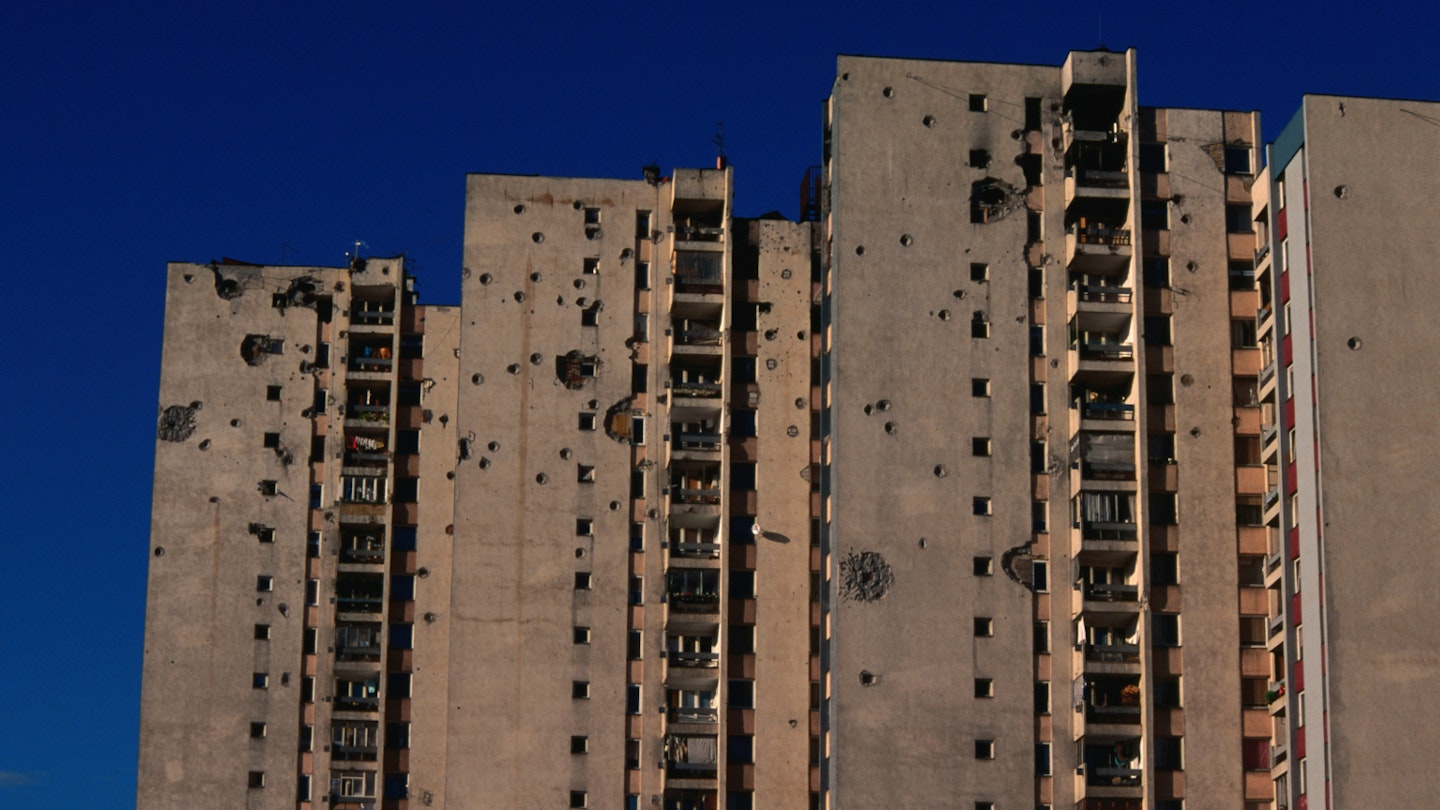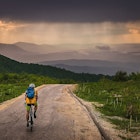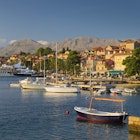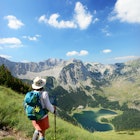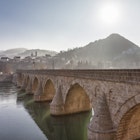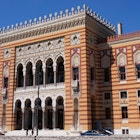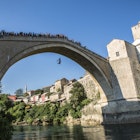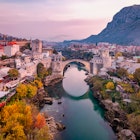Bosnia & Hercegovina (abbreviated to BiH) is one of Europe’s lesser-known countries. When still part of Yugoslavia, its top-rated ski-resorts hosted the 1984 Winter Olympics. Its rivers offer some of Europe’s best (and best value) white water rafting. Its craggy contours are dotted with old castles. And the main cities have a curious mix of medieval Ottoman and 19th-century Austro-Hungarian architecture. But sadly, most people who've heard of Bosnia at all know it for the tragic civil war of 1992-1995.
Some twenty years later all is peaceful, but plenty of scars, both visible and invisible, remain. Moving museums commemorate the conflict, damaged buildings stand as silent reminders and the nation is still divided into separate political entities along old battle lines.

Sarajevo’s 'Tunnel of Life'
In 1995, artillery shells were raining down on Sarajevo from Serb units who surrounded the city. Well, almost surrounded it. The Bosniak defenders managed to retain a narrow corridor of ‘free’ territory leading from the forested mountains to the airport runway, which had been maintained as neutral territory by a UN force. But for the Bosniaks, crossing the sniper-strafed runway would have been suicidal.

The only way they could get personnel, arms and supplies in or out of the city was through a laboriously hand-dug 800m-long tunnel beneath the runway. A short section of this tunnel has been preserved along with the battle-ravaged house in whose basement the entrance was hidden. Today the 'Tunnel of Life' forms one of BiH’s most moving, thought provoking museums.
Srebrenica
A derelict battery factory at Potočari is one of the most unlikely destinations for tourists in northeastern Bosnia. But it’s also one of the most affecting – a bleak, cavernous memorial hall commemorating over 8000 Bosniaks who died or disappeared in July 1995 when the supposedly ‘Safe Area’ of Srebrenica was overrun by Serb forces. That was the single worst massacre of the war, an act that has been officially declared ‘genocide’ by the ICTY (icty.org). It’s all the more poignant for the fact that most of those killed had come to the battery factory seeking sanctuary, hoping in vain that a Dutch-UN monitoring force who were based there might offer protection. Across the road, a cemetery’s forest of close packed white tombstones grows larger every year as more victims’ body-parts are identified from mass graves.
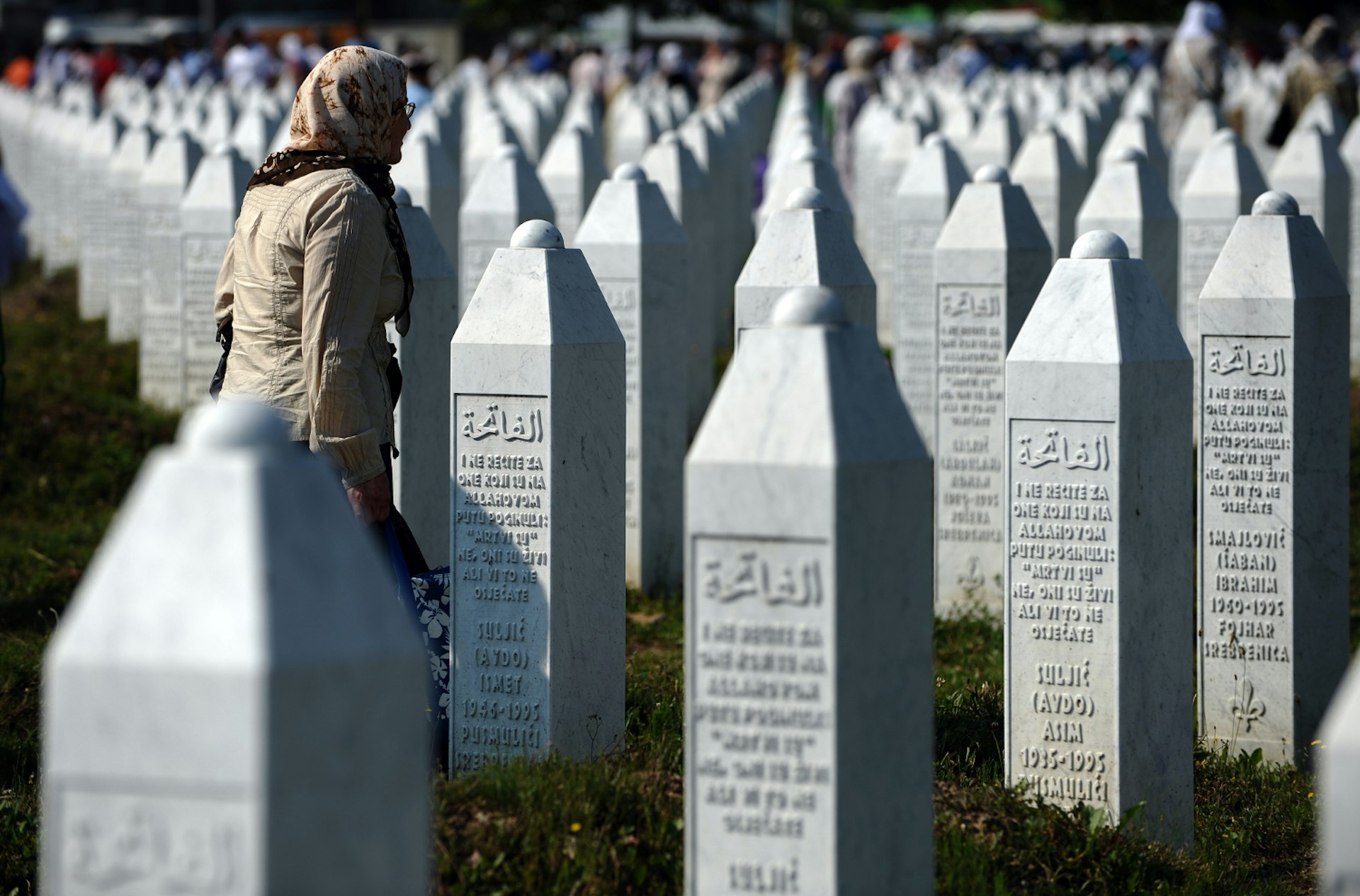
If you can't make it out to the actual site, Sarajevo also has its own Srebrenica memorial museum, the visually powerful Galerija 11-07-95.
Mostar’s two faces
Sizzling in summer sunshine, Mostar is at the heart of Herzegovina’s wine country. Its picture-perfect re-incarnated Ottoman core is focussed on Stari Most, a unique arc of stone bridge from which you can watch daredevil young divers throw themselves over 20m into the icy River Neretva.
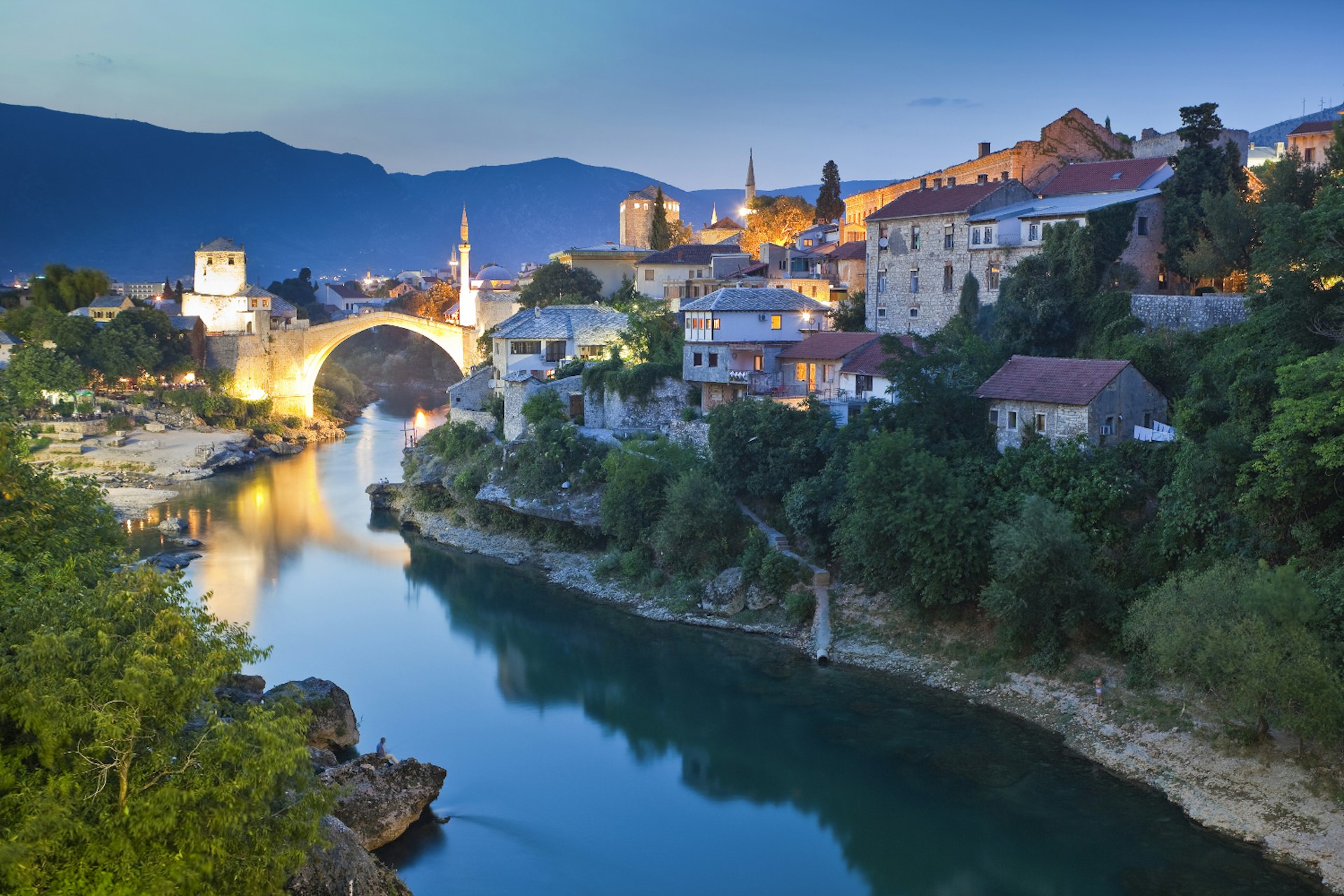
As you watch the spectacle over stuffed squid or Bosnian coffee on the terrace of one of the great-value riverside restaurants, it’s easy to forget that in 1993 this was the middle of a war zone. And that in November 1993, a Bosnian-Croat bombardment blew the original bridge into the river. However, while painstaking reconstruction makes the bridge look true to its 16th-century appearance, elsewhere in Mostar burnt-out building shells are still all too easy to spot. Just a few battered walls remain of the once majestic neo-Moorish Hotel Neretva. And rising above Spanski Trg, the former Ljubljanska Banka remains a haunting nine storey concrete skeleton.
Post-war particularities
The war has been over for nearly 20 years. The initially fragile peace, agreed at Dayton Ohio, is maintained by a complex system of political and bureaucratic divisions designed to give each community a say in its own affairs. Today the country remains divided into the Federation (with cantons run by Bosniaks and/or Bosnian Croats) and the Republic Srpska (RS, run by Bosnian Serbs). Entering the latter there’s no mention of BiH on the welcome boards. While road signs are in both Latin and Serbian-Cyrillic scripts, it’s not unusual to see local graffiti crossing out the version that is not seen as locally acceptable. Meanwhile, each community has its own postal system. In Mostar that means GPOs for both the Federation post office and Bosnian Croat post office within a kilometre of each other. Mad, perhaps, but at least it's fun for philatelists.
Land mine alert
After nearly two decades of valiant work, BHMAC (bhmac.org) has cleared a large percentage of the landmines and unexploded ordinance that once littered the BiH conflict zones. But around 2.4% of the country’s area is still reckoned to be potentially mined, and full clearance isn’t envisaged before 2019.

Areas most seriously affected are generally marked with yellow tape, along with distinctive red signs featuring an unmistakeable white skull-and-crossbones. It is never wise to go scrambling through overgrown forest areas, nor around war-ruined old buildings.
Art made from bullets
It wasn’t only landmines that were left over after the conflict. Countless tonnes of spent ammunition littered the ravaged urban landscapes, offering an unexpected opportunity to entrepreneurial coppersmiths who turned bullets into sculptures and beat shell casings into intricate works of art. For years, Mostar's souvenir shops have sold bullet-pens as cheap souvenirs. But hurry if you want to buy one as supplies of old ammo are finally drying up. Thankfully.

No guns please
Going for a dip? Fine – but please don’t bring a pistol! These days Bosnia is probably one of the safest places in Europe. But for most other Europeans it’s still a bit unnerving to find that shops, banks and even swimming pools still feel it necessary to post signs asking patrons not to carry a gun.
